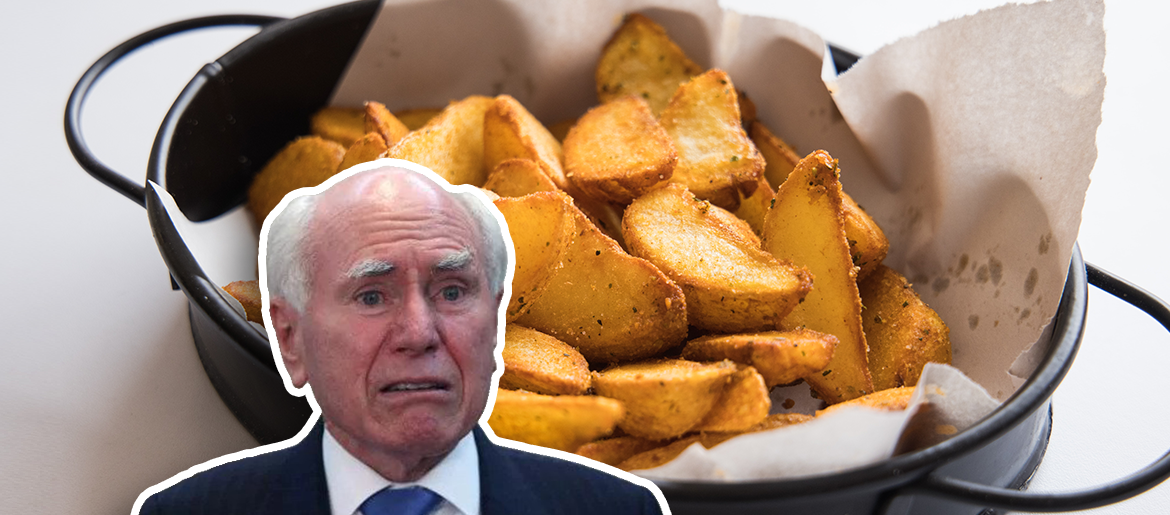
In the first sitting week of Parliament for 2022, Scott Morrison’s doomed and dangerous Religious Freedoms Bill dominated the news, political discussion and Parliament’s time (quite literally taking the House of Representatives debate past midnight). Alongside it you might have seen political commentators, journalists and AusPol Twitter talking about how the Bill was being used as a “wedge”. Not sure what ‘wedge’ means? Don’t worry – here’s what it is and why the concept of wedge politics is so important to understand before the election.
What Does ‘Wedge’ Mean?
A wedge is a divisive or controversial topic that one side of politics takes a deliberate stance on in an attempt to force the other side into taking the opposite stance. As explained in The Atlantic, the theory is that “if one side of an issue is right, then the other must be wrong – there is no in-between.” The goal is to split your opponent’s voter base on the issue, creating division amongst their supporters.
In the case of the Religious Freedoms Bill, Morrison tried to position himself and the Coalition as protecting religious freedoms for all, which would force Anthony Albanese and Labor to take the opposite position – that they are against religious freedom. The latter is clearly the less desirable stance to be branded with, and finding a way to turn it into a positive position is much more difficult. It stirs up all the conflicting opinions amongst their voters, potentially turning some people away.
This is just one example of an electoral wedge, but it’s relatively common in Australia and occurs across a range of issues. Wedge politics works ‘well’ (from a politician’s point of view) in a two-party system like Australia’s where the major parties operate in a constant state of “I’m-right-therefore-you-are-wrong.”
Causing real world pain to some of our most vulnerable for an electoral wedge. Our leaders once again covering themselves in glory
— Amy Remeikis (@AmyRemeikis) February 10, 2022
How Wedge Politics Impacts Australia and You
Wedge politics can be a very effective election strategy. With the right topic selection and messaging, one party can force the other to take an unappealing position. If successful, you make them look really bad to the public, or you drive a wedge between their supporters and swing voters to pick up some of those votes for yourself.
A classic example of this is the Tampa affair issue in the 2001 election campaign. The short version of this story: when the Tampa MV boat carrying over 400 Hazara asylum seekers attempted to enter Australian waters in August 2001, the Australian government refused to let it in. Prime Minister John Howard used this to show that his Liberal party would be ‘tough on borders’ with no exceptions. With the November 2001 election only a few months away, Labor and then-leader Kim Beazley had to choose a position – take the ‘soft’ position of allowing asylum seekers to continue to enter by boat, or be perceived as ‘following’ Howard’s strong lead by also adopting a tough-on-borders stance. When the September 11 attacks in the US came just weeks later, Howard was able to double down on the idea of controlling who could enter the country and Beazley was forced to agree. Outraged by the lack of empathy and humanity of the ALP’s position, many Labor supporters were driven to vote for the Greens instead. The Liberals won the election.
The perceptions created by wedge politics can shape the way that we view the issue for years after the fact. The Tampa Affair happened 20 years ago, and yet perceptions of asylum seekers and Australia’s obligations to them are only just starting to change. It was such a successful strategy that the Liberal Party continues to campaign on a secure borders platform, making immigration policy a consistently messy topic for the ALP.
By allowing important issues to be used as wedges we lose all the nuance and middle ground of the debate. These topics are never black-and-white, but wedging tries to present them as such. This is why it’s important to be able to recognise when parties and politicians are trying to wedge each other, so we can avoid letting a bad-faith discussion take over and harm people in the process. After all, the issues themselves are real and the decisions made have a genuine impact on people’s lives.
After the 2001 election, the Australian media was criticized for failing to identify Howard’s clear wedging strategy and factor that into the coverage of the Tampa Affair and the election. Today, the 24/7 news cycle thrives on the combative nature of oppositional politics and wedging even more than it did 20 years ago. This week, trans kids became the central talking point of the Religious Freedoms Bill, making their very existence the unwilling focus of the ‘debate’. Even though the Bill wasn’t solely about them, the national discussion was (Zee Feed has complicity in that, too.)
The powerful ability of wedge politics to shape the trajectory of the country for decades means all voters need the political literacy to spot it, and stop it taking over the conversation.
Related Posts





Comments are closed.